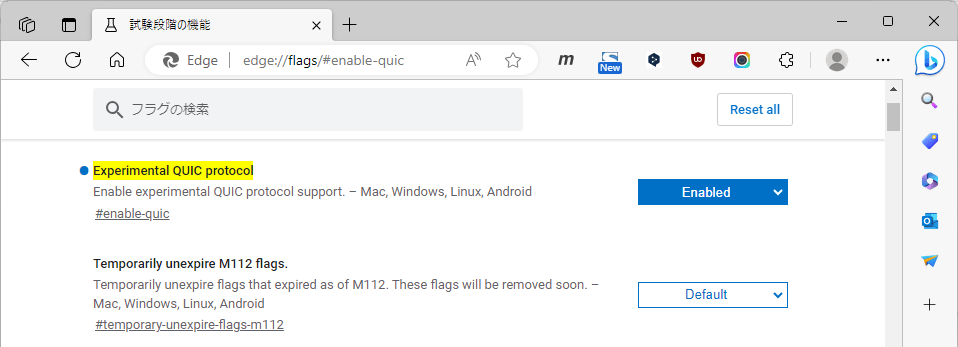サーバー間の通信速度を測る代表的なツールはいくつかあります。これまでは原点となるttcpを使っており、数年前からntttcpを知り併用してきました。
今後は、ttcpの利用はCiscoルータなど特定分野でのみ使い、ntttcpに移行します。
■安心材料
- ntttcpは、ソースコードがGitHUBで公開されている
- ntttcpは、マイクロソフト社が支援し、MS社がドキュメントを公開
■良い点
- nttcpは、デフォルトで、スレッド化される
- nttcpは、デフォルトで、60秒間測定し、伝送速度以外の情報も表示する
- nttcpは、IPv6指定可能
マルチスレッド、IPv6にも対応しています。
デフォルトの動作で、必要な情報が取得できます。
取得例は、この投稿の前の記事をご覧ください。
~/ntttcp-for-linux-1.4.0/src$ ./ntttcp --help
NTTTCP for Linux 1.4.0
---------------------------------------------------------
./ntttcp: invalid option -- '-'
Author: Shihua (Simon) Xiao, sixiao@microsoft.com
ntttcp: [-r|-s|-D|-M|-L|-e|-H|-P|-n|-l|-6|-u|-p|-f|-b|-W|-t|-C|-N|-R|-K|-I|-x|-V|-h|-m <mapping>
-r Run as a receiver
-s Run as a sender
-D Run as daemon
-M [receiver only] multi-clients mode
-L [sender only] indicates this is the last client when receiver is running with multi-clients mode
-e [receiver only] use epoll() instead of select()
-H [receiver only] hold receiver always running even after one test finished
-P Number of ports listening on receiver side [default: 16] [max: 512]
-n [sender only] number of threads per each receiver port [default: 4] [max: 25600]
-l [sender only] number of connections per each sender thread [default: 1] [max: 1000]
-6 IPv6 mode [default: IPv4]
-u UDP mode [default: TCP]
-p Destination port number, or starting port number [default: 5001]
-f Fixed source port number, or starting port number [default: 25001]
-b <buffer size> [default: 65536 (receiver); 131072 (sender)]
-W Warm-up time in seconds [default: 0]
-t Time of test duration in seconds [default: 60]
-C Cool-down time in seconds [default: 0]
-N No sync, senders will start sending as soon as possible
Otherwise, will use 'destination port - 1' as sync port [default: 5000]
-R Show system TCP retransmit counters in log from /proc
-K <network interface name>
Show number of packets transferred (tx and rx) through this network interface
-I <device differentiator>
Show number of interrupts for the devices specified by the differentiator
Examples for differentiator: Hyper-V PCIe MSI, mlx4, Hypervisor callback interrupts, ...
-x Save output to XML file, by default saves to ntttcp-for-linux-log.xml
-V Verbose mode
-h Help, tool usage
-m <mapping> for the purpose of compatible with Windows ntttcp usage
Where a mapping is a 3-tuple of NumberOfReceiverPorts, Processor, ReceiverAddress:
NumberOfReceiverPorts: [default: 16] [max: 512]
Processor: *, or cpuid such as 0, 1, etc
e.g. -m 8,*,192.168.1.1
If for receiver role: 8 threads listening on 8 ports (one port per thread) on the network 192.168.1.1;
and those threads will run on all processors.
If for sender role: receiver has 8 ports listening on the network 192.168.1.1;
sender will create 8 threads to talk to all of those receiver ports
(1 sender thread to one receiver port; this can be overridden by '-n');
and all sender threads will run on all processors.
Example:
receiver:
1) ./ntttcp -r
2) ./ntttcp -r192.168.1.1
3) ./ntttcp -r -m 8,*,192.168.1.1 -6
4) ./ntttcp -r -m 8,0,192.168.1.1 -6 -R -K eth0 -I mlx4 -V
sender:
1) ./ntttcp -s
2) ./ntttcp -s192.168.1.1
3) ./ntttcp -s -m 8,*,192.168.1.1 -n 16 -6
4) ./ntttcp -s -m 8,0,192.168.1.1 -n 16 -f25001 -6 -V
~/ntttcp-for-linux-1.4.0/src$
いつもアクセスありがとうございます。ttcpを使ってきましたが、近代的なntttcpを使うことにしました。


































